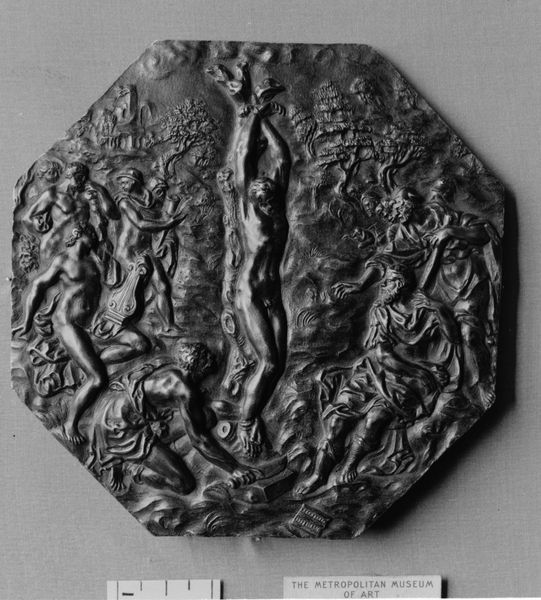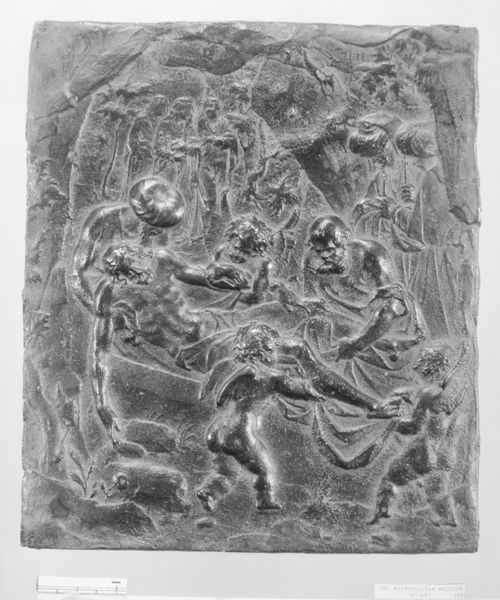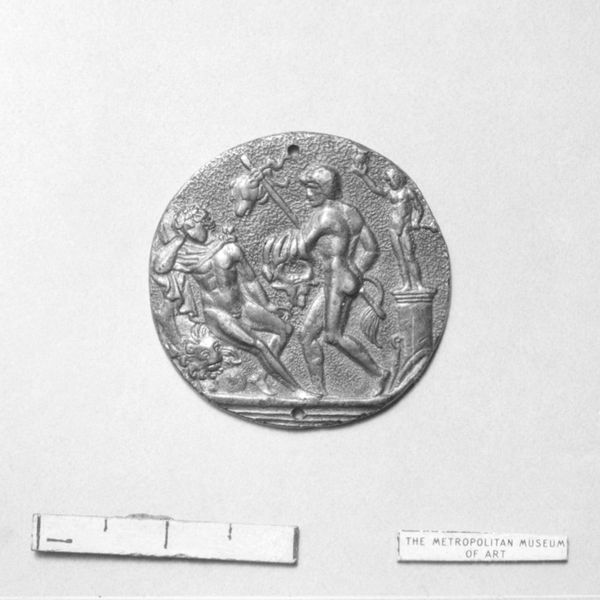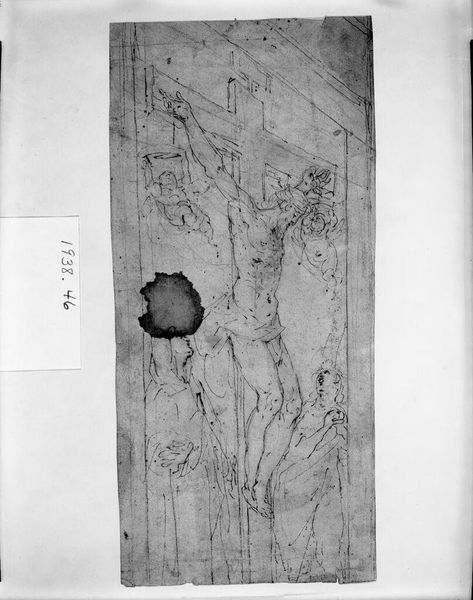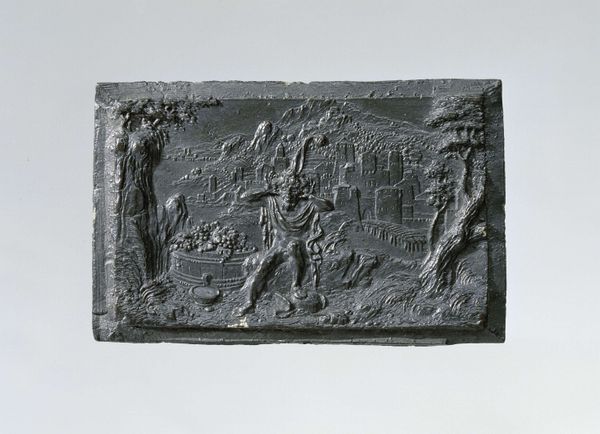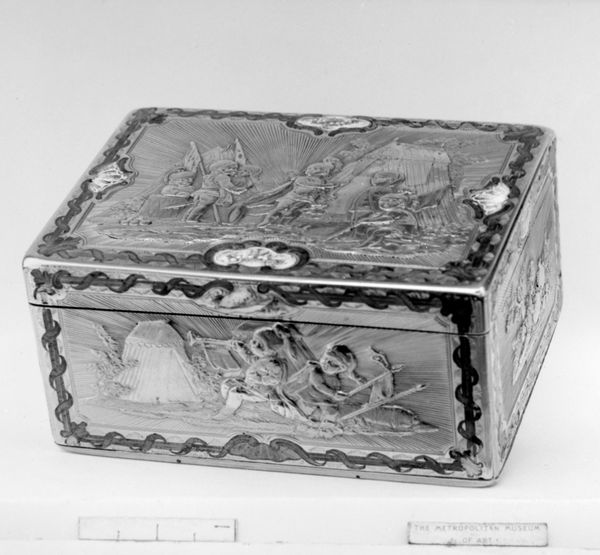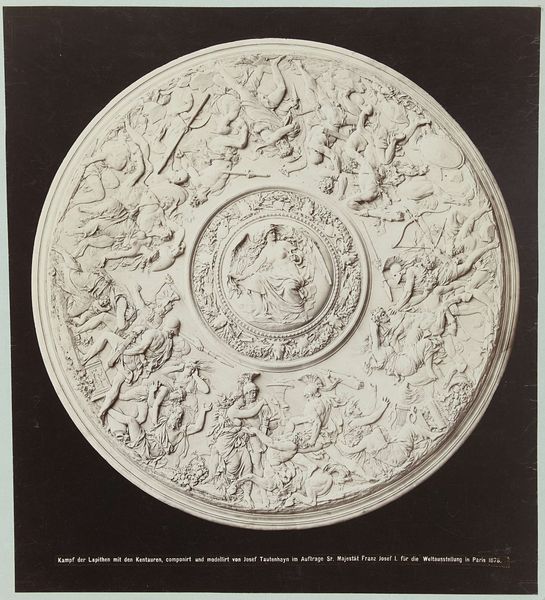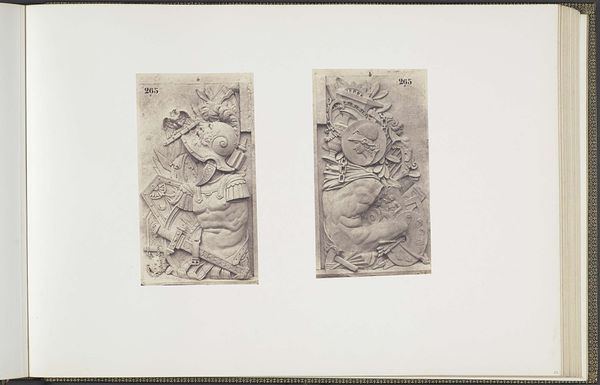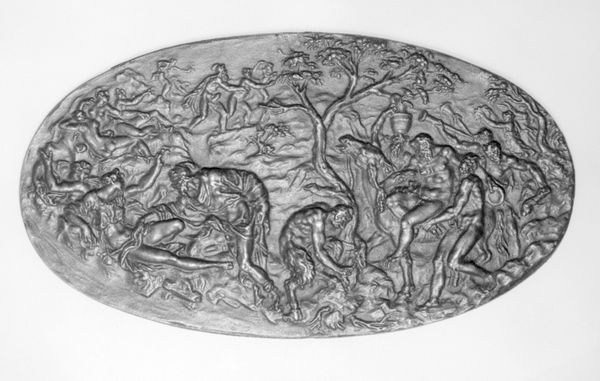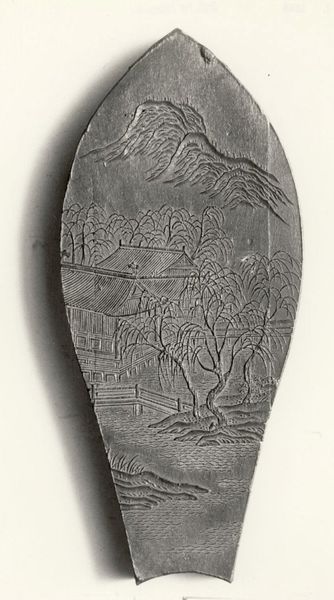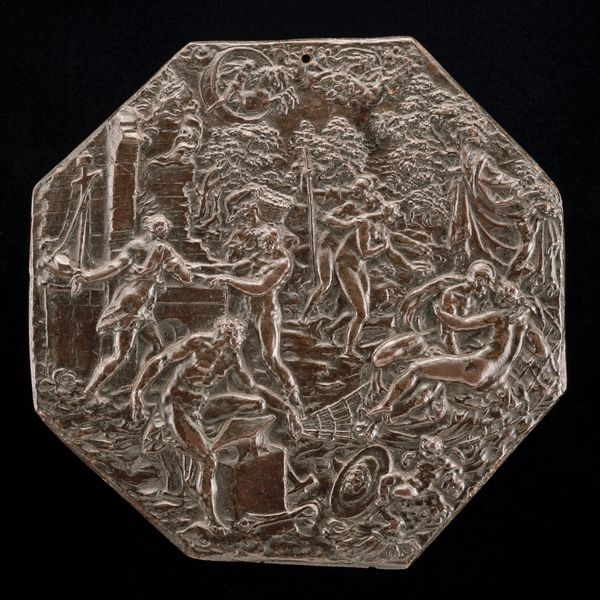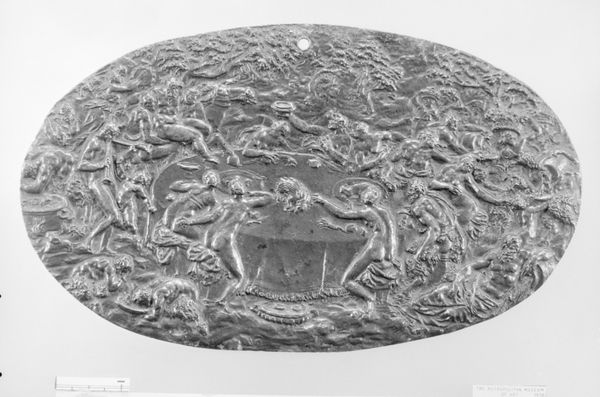
relief, bronze, sculpture
#
allegory
#
sculpture
#
textured
#
detailed texture
#
dog
#
relief
#
bronze
#
mannerism
#
figuration
#
sculpture
#
decorative-art
#
charcoal
#
nude
Dimensions: Diameter: 4 7/8 in. (12.4 cm)
Copyright: Public Domain
Curator: Looking at this Mannerist bronze relief, the density is what strikes me first. So much textural information packed into one octagonal plane! Editor: This is Guglielmo della Porta's "Legend of Ganymede," created sometime between 1585 and 1615. The myth of Ganymede was obviously potent subject matter at the time, portraying his abduction by Jupiter, king of the gods. It now resides here at the Metropolitan Museum. Curator: Yes, the story's there, no doubt. But my focus is on the intricate rendering—see how Della Porta models the sinuous figures and the dynamic flow of landscape elements. There is also an attempt at perspectival depth achieved through layers. Editor: Absolutely, it’s impossible to separate the artwork’s formal qualities from the social and religious conventions of its period. These private devotional objects like "Legend of Ganymede" offered affluent collectors a sophisticated and acceptable, yet suggestive, portrayal of Greek mythology. Curator: The Mannerist style, with its elongated figures and emphasis on elegance, suits the story's drama well. See how the textures, rendered in bronze, catch the light? The relief takes on a life of its own, oscillating between the earthly and the ethereal. Editor: Don't forget that bronze-casting itself required a high degree of technical skill, making such works signs of a patron's cultural clout. The dog shown as Ganymede is being taken away alludes to Ganymede's innocence and loyalty, elements prized during that period of Italian aristocracy. Curator: That animal's presence creates a visual anchor. My reading of the material speaks to something lasting— the relief captures an instantaneous narrative moment but freezes it for an eternity through medium. Editor: It's also hard to dismiss how images of the nude Ganymede entered into the larger discussions about art, homoerotic desire, and the role of mythology. Curator: The detail really draws one in. There is an elegance to the composition, no matter the content, which, yes, we have contextualized to the degree one must, while the execution itself retains its splendor. Editor: I would simply add, the Met's acquisition of the piece reflects the museum's commitment to safeguarding artistic creations. It continues to add layers of meaning across generations.
Comments
No comments
Be the first to comment and join the conversation on the ultimate creative platform.
